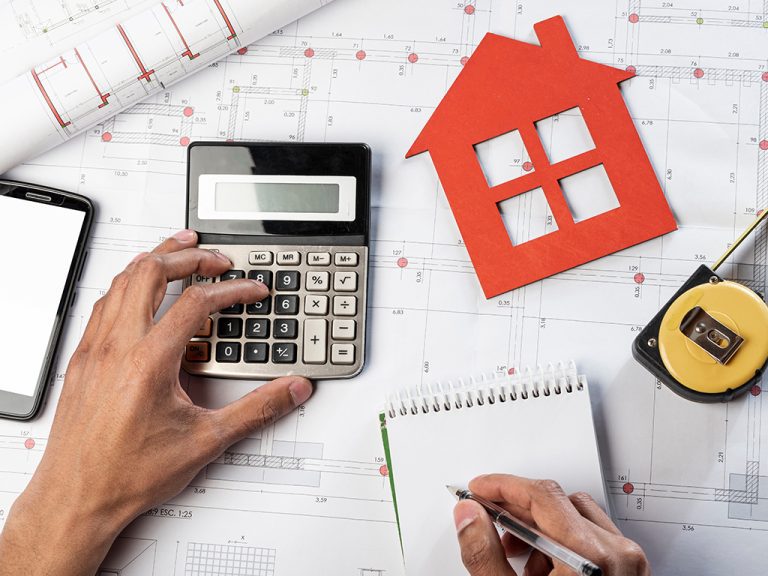In the field of Architecture, Engineering, and Construction (AEC), there’s a notable transition occurring from basic 3D Building Information Modeling (BIM) towards more sophisticated 7D BIM services. This shift is reshaping how projects are conceived, designed, and overseen. The traditional 3D model, centered on geometric depiction, is no longer adequate in a landscape that demands greater efficiency, sustainability, and reliance on data for decision-making.
Transitioning from 3D to 7D BIM revolutionizes every aspect of a building’s lifespan, from inception to completion. It’s not merely about incorporating additional dimensions; rather, it entails seamlessly integrating cost, time, sustainability, and facility management into both the design and operational phases of construction.
For professionals within the construction sector, grasping the significance of this transition from 3D to 7D BIM is paramount. It goes beyond merely staying abreast of technological advancements; it involves capitalizing on these innovations to maintain competitiveness and mastering the utilization of BIM to enhance project precision, cost efficiency, and long-term asset maintenance.
The intricacies and subtleties of BIM services across different phases and dimensions often leave industry experts uncertain about their full potential and the challenges they pose. Through real-life case studies and practical applications, this article aims to elucidate how each dimension of BIM contributes unique value to construction projects.
Exploring the World of 3D BIM Services
In the initial phases of Building Information Modeling (BIM), 3D modeling serves as the cornerstone—it essentially creates a digital replica of tangible structures. At the core of 3D BIM lies the meticulous crafting of accurate, digital 3D renditions of buildings or infrastructures. Every element of the construction, from walls and windows to plumbing and electrical systems, is meticulously fashioned within a virtual realm.
The 3D BIM model emerges as the pivotal hub for all project-related data. It enhances visualization capabilities and facilitates seamless collaboration among architects, engineers, and contractors during the conceptualization, evaluation, and fine-tuning phases of the project within a simulated environment. This fosters transparent communication and minimizes misunderstandings among project stakeholders.
3D Building Information Modeling (BIM) services offer a comprehensive approach to construction project management, revolutionizing the way projects are conceptualized, designed, and executed.
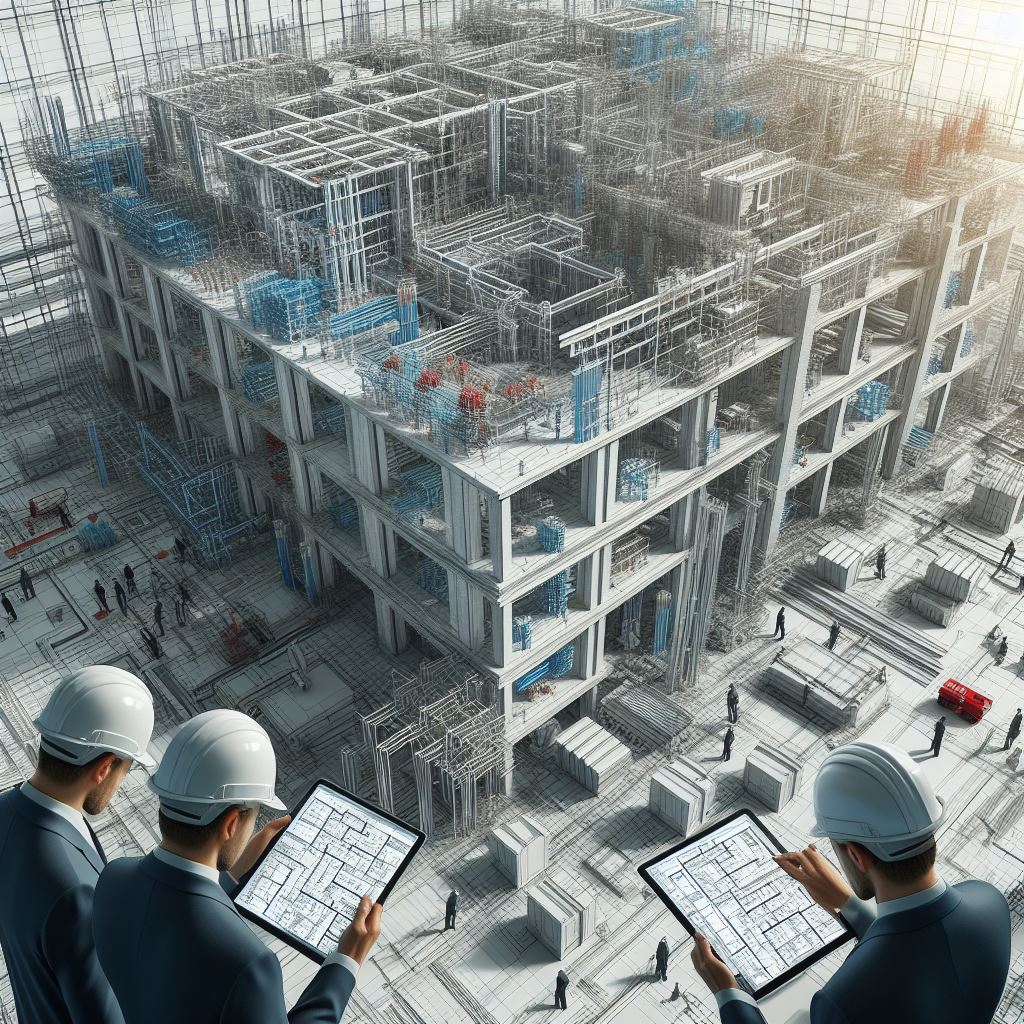
Let’s delve into the benefits of utilizing 3D BIM services across various phases of construction:
Enhanced Visualization: Detailed 3D representations aid in understanding design intent.
Improved Collaboration: Facilitates seamless communication among stakeholders.
Clash Detection: Early identification and resolution of conflicts between building components.
Accurate Quantity Takeoffs: Detailed material quantities for precise cost estimation.
Streamlined Scheduling: Optimized construction timelines and critical path analysis.
Facility Management: Valuable asset for maintenance and operational planning.
Sustainability: Enables evaluation of environmental performance and energy efficiency.
Understanding 4D BIM: Incorporating Time Dynamics
In the realm of construction projects, the dimension of time has emerged as a crucial element. This necessity gave rise to 4D Building Information Modeling (BIM), seamlessly integrating time into the digital landscape. By incorporating timelines, stakeholders can witness the progression of construction activities, facilitating efficient scheduling and management.
The adoption of 4D BIM is steadily rising within the construction sector. Construction firms, project managers, and owners increasingly acknowledge the significance of time integration in the digital modeling process.
Application of 4D BIM in Construction Scheduling and Management
4D BIM extends the capabilities of traditional 3D BIM by introducing the temporal dimension. It entails linking the 3D digital model with a timeline, enabling stakeholders to visualize and comprehend the project’s evolution over time.
A standout feature of 4D BIM is its ability to simulate the construction timeline, offering a comprehensive view of the project’s journey from inception to completion. Users can track the convergence of various project components at different stages, facilitating better understanding and decision-making.
Moreover, 4D BIM empowers project managers to transcend static timelines. By integrating the construction schedule into the digital model, stakeholders can anticipate potential bottlenecks, optimize resource utilization, and mitigate delays. This dynamic preview enhances communication among team members and enables proactive construction management.
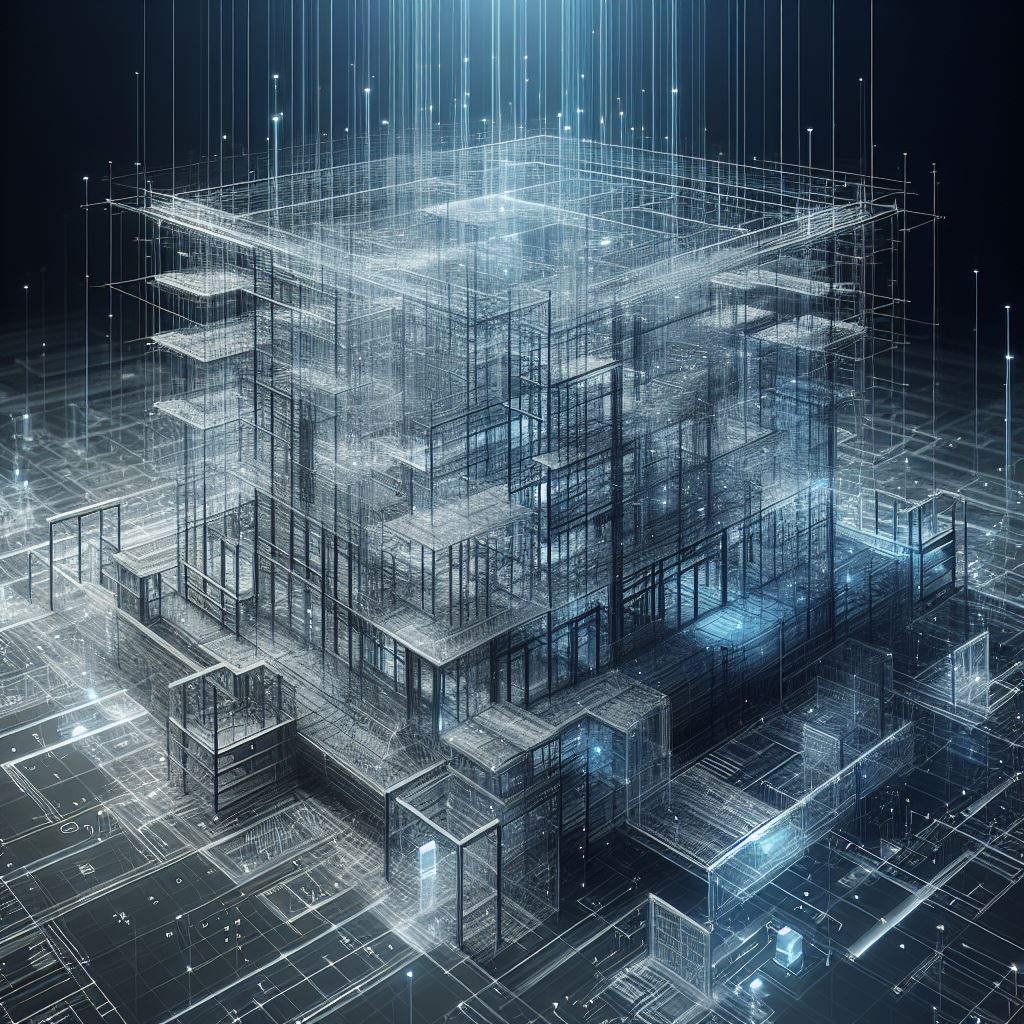
Benefits of 4D BIM:
- Enhanced Construction Sequencing Visualization: Provides clear understanding of project evolution.
- Improved Project Planning and Management: Enables accurate planning, scheduling, and risk mitigation.
- Better Communication and Collaboration: Facilitates teamwork and efficiency.
- Early Detection of Issues: Identifies problems before escalation, reducing delays.
- Increased Client Satisfaction: Enhances client understanding and feedback incorporation.
- Cost Savings: Optimizes resources and minimizes waste for profitability.
Applications of 4D BIM:
- Construction Planning: Helps in visualizing and optimizing construction sequences, enhancing project planning accuracy.
- Project Management: Facilitates real-time tracking of construction progress, enabling efficient resource allocation and scheduling.
- Clash Detection: Identifies potential clashes between different construction elements, reducing rework and delays.
- Stakeholder Communication: Enhances communication by providing dynamic visualizations of project timelines and milestones.
- Simulation and Analysis: Allows for simulation of different construction scenarios and analysis of their impact on project timelines and costs.
- Facility Management: Supports facility managers in understanding the construction process and maintenance requirements for better long-term planning.
Incorporating 5D BIM Services: Enhancing Cost Management in Construction Projects
Introduction to 5D BIM: Integrating Cost-Related Data
In the realm of construction project management, the emergence of 5D Building Information Modeling (BIM) marks a significant advancement. Unlike its predecessors, 5D BIM extends beyond mere visualization and scheduling by incorporating cost-related data, thus revolutionizing the way budgeting and financial planning are approached in the construction industry.
Cost Estimation and Budgeting with 5D BIM Services
Traditional cost estimation methods often lack real-time insights and can be prone to inaccuracies. However, with 5D BIM, stakeholders are equipped with dynamic, real-time cost data linked directly to the digital model. This integration allows for informed decision-making, early identification of potential cost overruns, and optimization of resource allocation.
One of the key advantages of 5D BIM is its proactive approach to cost management. By providing stakeholders with a comprehensive view of the project’s financial landscape, including anticipated costs at each stage of the construction process, 5D BIM enables them to anticipate challenges and implement strategies to mitigate risks, thus contributing to the overall financial health of the project.
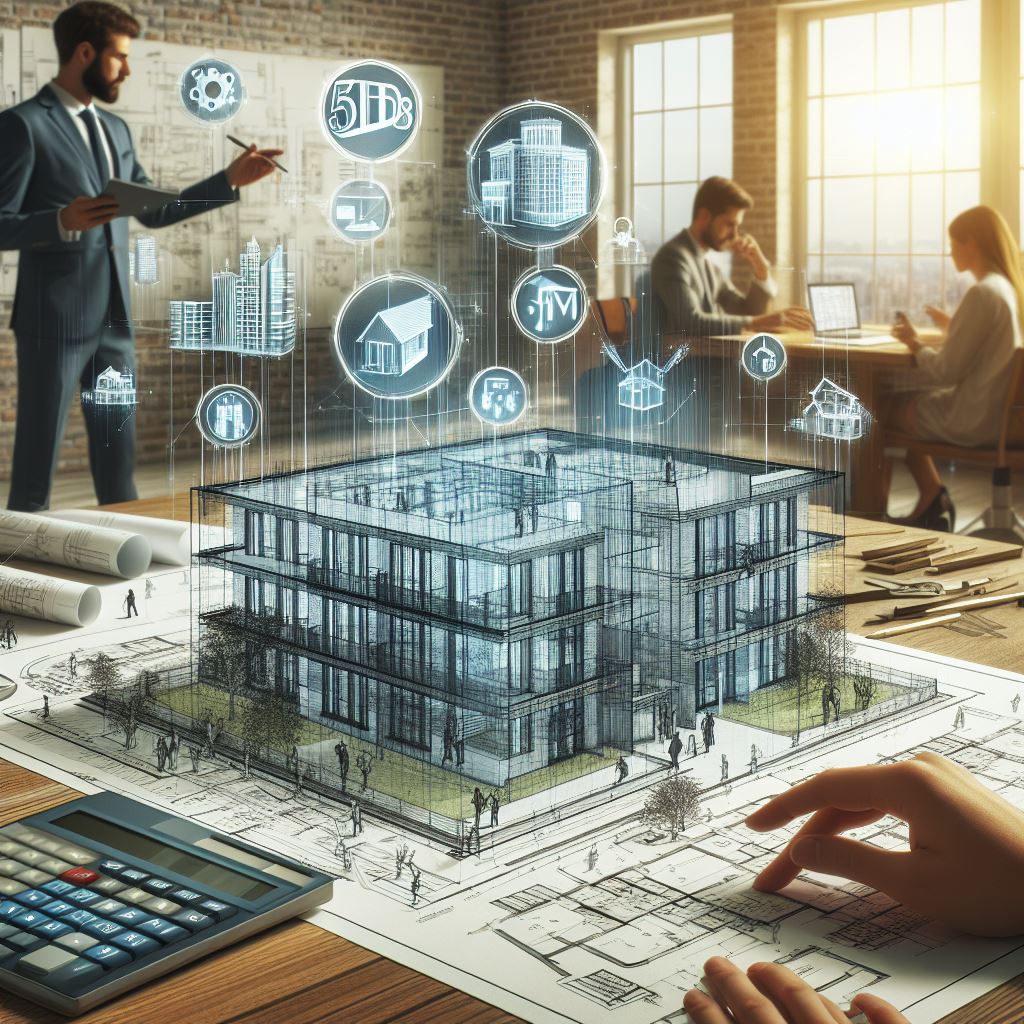
Benefits of 5D BIM:
- Real-time Cost Insights: Provides dynamic, real-time cost data for informed decision-making.
- Early Identification of Cost Overruns: Enables proactive cost management and risk mitigation.
- Optimization of Resource Allocation: Helps in efficient allocation of resources, leading to cost savings.
- Data-driven Decision Making: Facilitates analysis of different scenarios for better decision-making aligned with project objectives and budget constraints.
- Improved Project Financial Health: Contributes to overall financial health of the project by enhancing cost management practices.
Incorporating 6D BIM Services: Unlocking the Full Potential of Building Information Modeling
As technology continues to reshape the landscape of the construction industry, the integration of 6D Building Information Modeling (BIM) services marks a significant leap forward. Going beyond the traditional dimensions of BIM, 6D BIM introduces the concept of sustainability and lifecycle management into the digital modeling process, thereby revolutionizing how buildings are designed, constructed, and maintained.
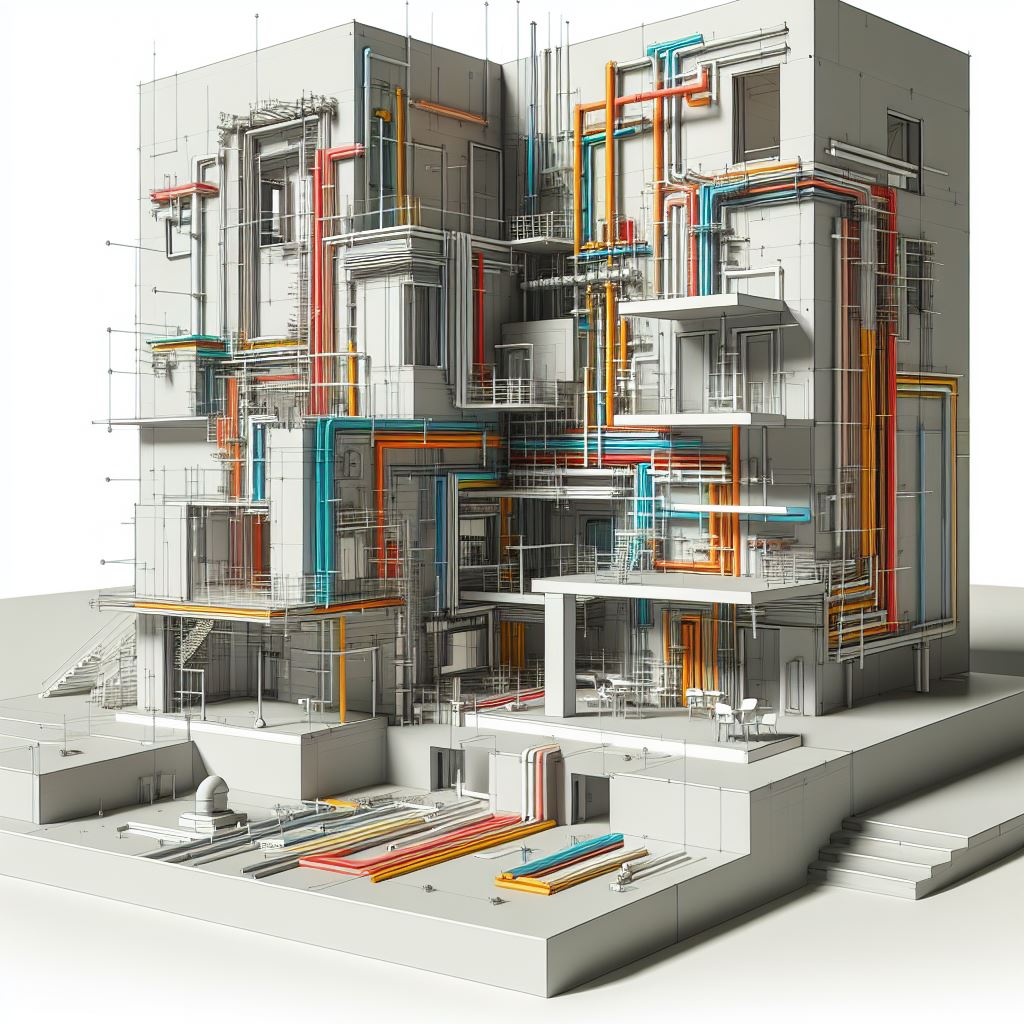
Benefits of 6D BIM Services:
- Enhanced Sustainability Planning: By incorporating environmental and energy efficiency data into the digital model, 6D BIM enables stakeholders to make informed decisions about sustainable building practices from the early stages of design. This proactive approach to sustainability planning helps reduce environmental impact and improve the long-term sustainability of buildings.
- Improved Lifecycle Management: 6D BIM extends the lifespan of buildings by providing comprehensive data on maintenance schedules, replacement cycles, and operational costs. By integrating this information into the digital model, facility managers can effectively plan for ongoing maintenance and repairs, leading to increased efficiency and reduced downtime.
- Cost Savings: The proactive approach to lifecycle management facilitated by 6D BIM results in cost savings over the lifespan of a building. By identifying potential maintenance issues early on and optimizing maintenance schedules, stakeholders can reduce repair costs, minimize downtime, and prolong the lifespan of building components.
- Compliance and Regulatory Requirements: 6D BIM helps ensure compliance with building codes, regulations, and sustainability standards by providing accurate and up-to-date information throughout the lifecycle of a building. This ensures that buildings are designed, constructed, and maintained in accordance with regulatory requirements, reducing the risk of costly fines and penalties.
- Improved Collaboration and Communication: 6D BIM enhances collaboration and communication among project stakeholders by providing a centralized platform for accessing and sharing critical project information. By facilitating collaboration between architects, engineers, contractors, and facility managers, 6D BIM streamlines the design, construction, and maintenance processes, leading to improved project outcomes.
Incorporating 7D BIM Services: Unlocking the Full Potential of Construction Projects
Introduction to 7D BIM: Expanding Beyond Traditional Boundaries
As the construction industry continues to evolve, so too does the scope and complexity of projects. In this dynamic landscape, the emergence of 7D Building Information Modeling (BIM) represents a significant leap forward, offering an unprecedented level of insight and control throughout the entire lifecycle of a construction project.
Benefits of 7D BIM Services
- Enhanced Sustainability Integration: 7D BIM goes beyond traditional models by incorporating sustainability data and performance metrics. This allows stakeholders to assess the environmental impact of design decisions, materials selection, and construction processes, ultimately leading to more sustainable and eco-friendly projects.
- Improved Asset Management: With 7D BIM, stakeholders gain access to comprehensive data about every aspect of the built environment, from design and construction to operation and maintenance. This information can be leveraged for more effective asset management, including predictive maintenance, space utilization optimization, and lifecycle cost analysis.
- Enhanced Facility Operations: By integrating operational data into the BIM model, 7D BIM enables facility managers to streamline operations, improve energy efficiency, and enhance occupant comfort and safety. Real-time monitoring and analysis of building performance data allow for proactive maintenance and optimization of building systems.
- Increased Resilience and Disaster Preparedness: 7D BIM facilitates the integration of resilience and disaster preparedness measures into the design and construction process. By simulating various scenarios and assessing their impact on the built environment, stakeholders can identify vulnerabilities and implement mitigation strategies to enhance resilience and minimize risk.
- Better Decision Making and Stakeholder Collaboration: The comprehensive data provided by 7D BIM fosters better decision-making and collaboration among project stakeholders. From architects and engineers to contractors and facility managers, everyone involved in the project can access the same up-to-date information, leading to greater transparency, efficiency, and accountability.
Beyond 7D BIM: Envisioning 8D BIM
In the ever-evolving landscape of construction technology, the concept of Building Information Modeling (BIM) has continually pushed boundaries. With the emergence of 7D BIM, we have witnessed the integration of sustainability, asset management, and resilience into the digital construction ecosystem. However, as we look to the future, the possibilities expand even further with the envisioning of 8D BIM.
Quantum Computing and Artificial Intelligence (AI) are poised to revolutionize the construction industry, and their integration with BIM represents a paradigm shift in how projects are conceived, designed, and executed.
Quantum computing offers unprecedented computational power, enabling complex simulations and analyses that were previously inconceivable. With 8D BIM, quantum computing can be leveraged to model and optimize entire urban landscapes, predict the long-term performance of materials and structures, and simulate the effects of climate change on built environments.
Furthermore, AI algorithms can augment decision-making processes by analyzing vast amounts of data generated throughout the project lifecycle. From predictive maintenance and energy optimization to real-time risk assessment and automated project management, AI-powered 8D BIM systems have the potential to streamline workflows, reduce costs, and improve project outcomes.
In conclusion, the evolution from 7D to 8D BIM represents a quantum leap in the capabilities of digital construction technology. By harnessing the power of quantum computing and AI, 8D BIM promises to revolutionize the construction industry, enabling more sustainable, resilient, and efficient built environments. As we continue to push the boundaries of innovation, the possibilities are limitless, and the future of construction has never looked more promising.




